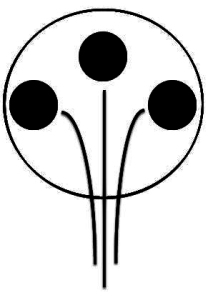
It is in the slow detailed movements of Qigong (pronounced “chee gong” and also written as Ch’i Kung or Chi-Gung) that we can develop the real power that ancient masters are famous for. If there is a secret, then it is in the diligent practice of Qigong, for within the practice of this moving meditation is the calm, centered mind and the strong, rooted body. And don’t let us forget about amazing body control.
But there are even more profound health reasons to practice Qigong. In the Chinese medical theory of health, the cause of disease is an imbalance in the energy or meridian (energy pathways) system. When the Qi (aka, “life force” or “bio-electricity”) is out of balance in some way, either excess or deficiency, sickness will be the result.
It is pretty surprising that only few people have heard of the remarkable recoveries from numerous diseases through the diligent practice of Qi Gong.
In China there are many people practicing from 2 to 4 hours per day and going from terminal cancer to complete remission. In fact, that’s exactly what happens when you set the mind and body straight – it heals itself.
In Hoboken, NJ, there’s Dr. Shi-Hong Loh, who tells the story of a sixty-year-old man with colon cancer that spread to his liver. After conventional treatments of chemotherapy resulted in increasing trouble with anxiety, the treatments were discontinued and he was recommended four hours of meditative Qi Gong exercises daily. Three months later CAT scans showed no signs of cancer.
In “Traditional Chinese Medicine World Newspaper” Dr. Loh was quoted saying, “When there is balance, the physical condition can be resolved. By regulating the emotions we can intervene. Qi Gong puts the emphasis on a peaceful mind. When the mind is peaceful, the body will follow.”
Qigong is bringing deep and powerful circulation to all joints, bones, nerves, and organs. The three components of Qigong are:
1) Breathing:
Deep breathing engages all five lobes of the lungs and greatly enhances our ability to oxygenate the blood, further removes carbon dioxide, and improves the overall efficiency of respiration. Doing this on a regular basis results in greater a volume of air with each breath and a lower rate of respiration. The body is working less but with greater results.
2) Movement:
Breathing takes in the Qi and movement circulates it. Movement automatically increases circulation, especially in the area of the body that is involved. The kind of movement performed can be determined by whatever the problem is. In addition, there are emotional components that are automatically addressed just by the focused practice itself. Proper posture also further engages the Dan Tian, which is basically from below the naval to the perineum and includes the front and back of the lower part of the torso.
3) Concentration:
Where the mind goes the Qi will follow. Basically, you cannot move at all without intention. The more intention and focus you bring into a task will determine just how much energy will be sent there.
Proper Qigong practice is meditation in motion. The practitioner should be completely focused on the moment – to coordinate the movement and the breath – and to engage the mind fully so as to increase the circulation and thereby enjoy more profound results.
Join me for different styles of Qigong, from Lotus Dance Qigong or Walking Qigong to Organ Cleansing Qigong Exercises and more.

